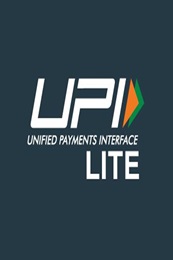A Comprehensive Guide to POS (Point of Sale) Transactions
May 09, 2025

India's digital payment landscape has experienced remarkable growth, with Point of Sale (POS) transactions playing a pivotal role. In the first half of 2024, the total volume of card transactions on POS terminals reached 2.16 billion, marking a 7% year-over-year increase.
This surge is driven by factors such as increased smartphone penetration, the proliferation of mobile wallets, and supportive government initiatives promoting digital payments.
In this blog, we have decoded what is POS transaction and how businesses benefit from it.
What are POS Transactions?
POS stands for Point of Sale. A Point of Sale (POS) transaction occurs when a customer makes a payment at a merchant's location, typically using a debit or credit card, mobile wallet, or contactless payment method. These transactions are processed through POS terminals, which securely capture and transmit payment information to complete the purchase.
How Do POS Transactions Work? A Step-by-Step Guide
Step 1: Transaction Initiation
The POS transaction process starts when a customer selects items or services. In a physical store, the cashier scans the barcode or manually inputs product details into the POS system. For online stores, this process begins when a customer adds products to their virtual cart.
Step 2: Payment Information Capture
Once the items are selected, the customer proceeds to pay using their preferred method: debit/credit card, mobile wallet, or UPI. The POS system captures the payment details through a card reader, QR code, or NFC (Near Field Communication) terminal.
Step 3: Authorisation Request
The payment data is sent to the payment processor, which communicates with the customer’s issuing bank for authorisation. This step confirms whether the customer has sufficient funds and whether the payment is valid.
Step 4: Real-Time Inventory Update
Once the transaction is authorised, the POS system updates the business's inventory in real time, ensuring stock levels are accurate and reducing the chances of overselling.
Step 5: Transaction Settlement
At the end of the day or on a predefined schedule, all POS transactions are bundled into batches. Payment processing fees are deducted, and the final amount is transferred from the customer's bank account to the merchant’s account.
Step 6: Receipt Generation
After successful payment processing, a digital or physical receipt is generated. This can either be emailed, sent via SMS, or printed for the customer’s records.
Types of POS Transactions in India
1. Payment Method-Based Transactions
- Debit and Credit Cards: Traditional card payments remain the most common type of POS transaction in India.
- Mobile Wallets: With the rise of platforms like Paytm, PhonePe, Google Pay, and Apple Pay, mobile wallets are increasingly being used for POS payments in both physical and online stores.
- QR Code Payments: A rapidly growing payment method in India, QR codes offer a simple, contactless way for customers to make payments by scanning a code displayed by the merchant.
- UPI: The Unified Payments Interface (UPI) has revolutionized POS transactions in India, facilitating instant bank-to-bank transfers with no transaction fees for consumers. UPI accounted for more than 75% of all digital transactions in 2023, according to the RBI.
2. Transaction Types
- In-Store Purchases: Traditional brick-and-mortar stores use POS systems for in-store transactions, processing card or mobile wallet payments at the checkout counter.
- Online Purchases: E-commerce websites use virtual POS systems integrated with payment gateways to securely process online payments.
- Mobile Payments: Many businesses are adopting mobile POS (mPOS) systems that allow payment processing through smartphones or tablets, ideal for service industries like food trucks, salons, or street vendors.
- Mail/Phone Orders: In this model, businesses accept payments over the phone or via mail using a POS system. This is common in sectors like florist deliveries or telemarketing services.
Key Benefits of POS Transactions
1. Convenience for Consumers
POS systems allow consumers to choose from multiple payment methods, including cards, mobile wallets, and UPI, providing convenience at checkout. With the rise of contactless payments, consumers no longer need to carry cash, making POS systems even more attractive.
2. Increased Sales Efficiency for Businesses
POS systems streamline operations by reducing the time spent on manual transactions and allowing businesses to accept payments 24/7. This enhances the overall customer experience, leading to quicker checkout times and fewer bottlenecks.
3. Accurate Record-Keeping
POS systems offer businesses accurate records of each transaction. These records are stored digitally, allowing businesses to track sales, monitor inventory, and streamline accounting processes. For Indian businesses, this becomes even more important with the shift towards GST compliance.
4. Real-Time Inventory Management
Real-time updates on stock levels ensure that businesses can manage their inventory more effectively. This reduces the risk of overstocking or understocking, improving operational efficiency.
How to Set Up a POS System for Your Business
Setting up a POS system is crucial for businesses to streamline their payment processing, manage inventory, and provide a smooth customer experience. Here’s a step-by-step guide to help you get started:
1. Choose the Right Type of POS System
Traditional POS System: A fixed setup that includes a cash register, barcode scanner, receipt printer, and card reader. Ideal for retail stores or restaurants.
- Mobile POS (mPOS): A more flexible option where businesses can process payments using a smartphone or tablet paired with a card reader. This is perfect for businesses that require portability, such as food trucks, salons, or service-based industries.
- Cloud-Based POS System: A system that stores data on the cloud, allowing businesses to access sales, inventory, and customer information from any device. This is great for businesses that need remote access to their data.
- Virtual POS (vPOS): Primarily used for online businesses, a vPOS system integrates with e-commerce platforms to process online payments securely.
2. Select a POS Provider
Choose a POS system provider that offers the features your business needs, including payment processing, inventory management, and reporting.
Consider the scalability, customer support, and integrations with other software (like accounting tools) when choosing a provider.
3. Register for a Merchant Account
To accept digital payments, you will need a merchant account with a bank or payment processor. This account facilitates the transfer of funds from customers to your business’s bank account. Most POS providers offer merchant accounts as part of their setup process.
4. Set Up Payment Gateway Integration
For businesses accepting online payments, setting up a payment gateway is crucial. A payment gateway allows your POS system to securely process credit/debit card payments, UPI, and digital wallets. Make sure the gateway is compatible with your POS provider and the payment methods you plan to accept.
5. Install Hardware (For In-Store POS)
- Card Reader: Depending on your payment methods, you’ll need to install a card reader that supports EMV chip cards, contactless payments, and magnetic stripe cards.
- Receipt Printer: Ensure you have a printer connected to your POS system to print customer receipts.
- Barcode Scanner: If you’re selling products, a barcode scanner will help you quickly add items to the bill.
- Cash Drawer: For businesses that still accept cash, a cash drawer is essential for securely storing cash payments.
6. Configure Software Settings
Once you have all your hardware in place, you’ll need to configure the software settings for your POS system:
- Add Products/Services: Input the details of your products or services, including pricing, descriptions, and images.
- Set Up Tax Rates: Configure your POS to include applicable taxes like GST (Goods and Services Tax) for Indian businesses.
- Customize Receipt Format: You can personalize receipts by adding your business logo, contact information, and return policies.
- Set Up Inventory Tracking: Link your POS system to your inventory, allowing it to automatically update stock levels after each sale.
7. Train Your Staff
Once your POS system is set up, it’s crucial to train your staff to use it effectively. Training should cover:
- How to process payments.
- How to manage inventory.
- How to issue refunds and manage returns.
- How to generate reports and monitor sales trends.
8. Test the System
Before fully launching your POS system, run a few test transactions to ensure everything is working as expected. Verify that payments are processing correctly, receipts are printing, and inventory is updating in real-time.
9. Monitor & Maintain the System
After setting up, it’s important to regularly monitor the system and perform routine maintenance to ensure its smooth operation. This includes:
- Checking for software updates.
- Backing up data periodically.
- Troubleshooting any technical issues that arise.
Benefits of Setting Up a POS System for Your Business
By setting up a POS system, businesses can enjoy several benefits:
- Enhanced Customer Experience: Fast, secure, and convenient transactions improve customer satisfaction.
- Increased Efficiency: POS systems reduce manual tasks, such as calculating totals or managing inventory, allowing businesses to focus on other areas of growth.
- Accurate Reporting: POS systems provide real-time analytics and sales reports, enabling business owners to make data-driven decisions.
- Improved Inventory Management: Automated stock tracking ensures that you never run out of popular items or overstock less-demanded products.
How Can Businesses Ensure the Security of POS Transactions?
To ensure the security of POS transactions, businesses should implement the following measures:
1. Use Secure POS Systems and Software
Ensure that the POS system and its software are up-to-date with the latest security patches. Older versions may have vulnerabilities that can be exploited by attackers.
Choose POS systems that support end-to-end encryption (E2EE) to protect payment information during the transaction process.
2. Implement Tokenization
Tokenization replaces sensitive customer data (like credit card numbers) with unique tokens that have no real-world value. Even if data is compromised, it is meaningless without the tokenization key.
3. Enable Multi-Factor Authentication (MFA)
Implement MFA for employees who access POS systems to add an extra layer of protection. For example, combining passwords with biometric verification or one-time passwords (OTPs) reduces the risk of unauthorized access.
4. Conduct Regular Security Audits
Regularly audit the POS system for any vulnerabilities, outdated software, or potential security risks. Third-party security firms can perform penetration testing and vulnerability assessments.
5. Secure Network Connections
Use firewalls, VPNs (Virtual Private Networks), and secure Wi-Fi networks to protect the communication between POS terminals and back-end systems. Encrypt all sensitive data being transmitted to prevent interception.
6. Monitor for Suspicious Activities
Continuously monitor POS transactions for unusual activity, such as multiple high-value transactions in a short period or transaction errors. Advanced fraud detection systems can help identify suspicious behaviour in real-time.
7. Employee Training
Train employees on security best practices, such as recognizing phishing attacks, handling sensitive customer data, and reporting potential security breaches. Inadequately trained staff are often the weak link in security.
8. Compliance with PCI-DSS
Ensure that the POS system complies with the Payment Card Industry Data Security Standard (PCI-DSS), a set of security standards designed to protect card information. This includes encrypting card data and ensuring secure payment processing.
9. Limit Access and Permissions
Restrict access to sensitive POS data to only those employees who need it. Implement role-based access control (RBAC) to prevent unauthorized personnel from viewing or modifying transaction data.
10. Use Secure Payment Methods
Encourage customers to use secure payment options like EMV chip cards or contactless payments, which offer better protection against fraud than traditional magnetic stripe cards.
Future Outlook: The Growth of POS Transactions in India
The future of POS transactions in India is bright. With the government's continued push for a digital economy and the expansion of UPI, the volume of digital transactions is expected to increase exponentially. The introduction of advanced technologies like AI, machine learning, and blockchain will further enhance the security and efficiency of POS transactions in the coming years.
Final Thoughts
POS transactions are transforming the way businesses in India process payments, enhancing customer experience, and optimizing operations. As more businesses adopt digital payment solutions, the POS landscape will continue to evolve, making it crucial for merchants to stay ahead of the curve. The growing use of mobile wallets, UPI, and QR codes reflects a shift towards a cashless economy, paving the way for future innovations in payment technologies.
Enjoy easy banking with Ujjivan Small Finance Bank. Save more with our high-interest Savings Account and Deposit products. Need cash for your business or personal needs? Apply for MSME Loans or Micro Loans with us – we offer competitive rates and quick disbursal. We also offer vehicle loans and home loans tailored for your unique requirements. Experience a smooth banking journey with Ujjivan SFB!
FAQs
1. What is a POS transaction?
A POS transaction is a payment made at a Point of Sale terminal to purchase goods or services, typically using a credit/debit card, mobile wallet, or UPI.
2. How does UPI impact POS transactions in India?
UPI allows for instant and seamless bank-to-bank payments with no transaction fees, making it one of the most popular payment methods in India.
3. What is a contactless payment?
Contactless payments use NFC technology, allowing customers to pay by tapping their card or mobile phone on the POS terminal without entering a PIN.
4. Are POS systems secure?
POS systems use encryption, tokenization, and biometric authentication to ensure the security of payment data, though fraud and data breaches are still concerns.
5. How do businesses benefit from POS systems?
Businesses benefit from increased efficiency, accurate record-keeping, real-time inventory management, and the ability to accept multiple payment methods.
6. What challenges do businesses face with POS systems?
Challenges include technical issues, security risks, integration difficulties, and infrastructure gaps in rural areas.
7. How has COVID-19 impacted POS transactions?
COVID-19 accelerated the shift to digital payments and contactless transactions, reducing the use of cash and encouraging safer, more hygienic payment methods.
8. Can small businesses afford POS systems?
Yes, with the availability of mobile POS systems (mPOS), small businesses can accept payments without investing in expensive infrastructure.
9. What types of POS systems are available?
There are traditional, mobile, and virtual POS systems, each suited for different business needs, from retail stores to online platforms.
10. How will POS systems evolve in the future?
Future POS systems are expected to integrate AI, machine learning, and blockchain technology to enhance transaction security, improve customer service, and offer personalized experiences.
Latest Blogs

Complete List of Common Types of Bank Accounts in India
May 08, 2025
As of 2024, India has over 2.2 billion bank accounts, a testament to the country’s rapid financial inclusion and evolving banking habits.

Best Investment During a Volatile Market? Fixed Deposits Could Be It
May 07, 2025
When the equity markets tumble, crypto takes a nosedive, and even gold shows inconsistent trends, Indian investors often turn to one of the most traditional instruments: Fixed Deposits (FDs).

Tips to Consider Before Opening a Current Account
May 06, 2025
As of early 2025, India has over 10 crore active current accounts, with digital current accounts alone witnessing a 42% year-on-year growth—driven by small businesses, freelancers, and start-ups.

6 Ways Mr. X Raised His CIBIL Score from 500 to 750
May 06, 2025
In India, more than 79% of loan approvals are granted to individuals with a credit score of 750 or above, according to CIBIL’s – one of the largest credit bureaus responsible for collecting and maintaining credit-related data of individuals and businesses - latest insights.

Top Mistakes to Avoid When Choosing a Current Account for Your Business
May 05, 2025
India's economic landscape in 2025 presents both opportunities and challenges for businesses. The country's current account deficit (CAD) stood at $11.5 billion, or 1.1% of GDP, in the third quarter of fiscal year 2024-25, reflecting a manageable economic environment.





